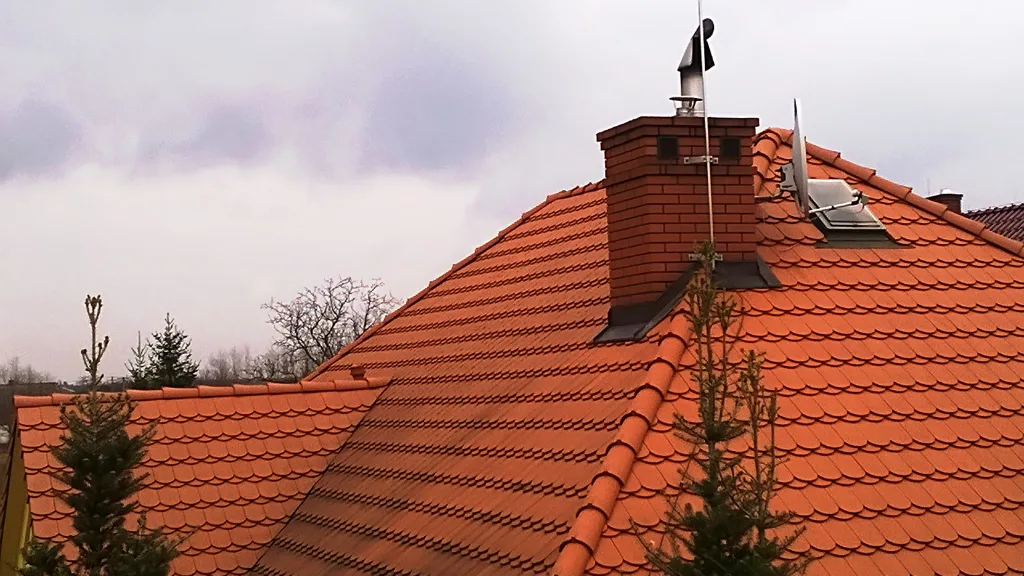
Built up roofing (BUR) has been a popular choice for flat roofs for over a century. BUR is known for its durability, low maintenance, and fire resistance.
However, it has its own set of pros and cons that you should consider before making a decision. In this article, we’ll explore the advantages and disadvantages of built up roofing.
We’ll discuss its longevity, insulation capabilities, and affordability, as well as some of the potential drawbacks, such as the weight and installation process.
Whether you’re a homeowner considering a new roof or a contractor looking for a reliable roofing option, our guide has got you covered. So, let’s dive in and learn more about the pros and cons of built up roofing!
What is Built-Up Roofing?
If you’re in the market for a flat roofing system, you may have come across the term “built-up roofing” or BUR. BUR is a roofing material that is made up of multiple layers of bitumen, felt, and other materials that are built up to create a final result.
This roofing system is known for its durability and longevity, making it a popular choice for commercial and industrial buildings.
The layers of materials used in BUR provide a high level of protection against the elements. The layers are typically installed using hot asphalt or cold adhesive, which creates a strong bond between the layers.
The top layer of the roofing system is typically covered in gravel or other aggregate materials, which provide additional protection against UV rays and other environmental factors.
One of the main advantages of built-up roofing is its ability to withstand harsh weather conditions, including heavy rain, snow, and wind. Additionally, BUR is relatively low maintenance and can last for up to 40 years with proper care and maintenance.
Installation of a built-up roofing system typically involves laying down multiple layers of materials and bonding them together using hot asphalt or cold adhesive. This process can be time-consuming and labor-intensive, but the end result is a durable and long-lasting roofing system.
Overall, built-up roofing is a reliable and cost-effective option for flat roofing systems. Its durability and longevity make it a popular choice for commercial and industrial buildings, and its ability to withstand harsh weather conditions makes it a practical choice for any building in need of a flat roofing system.
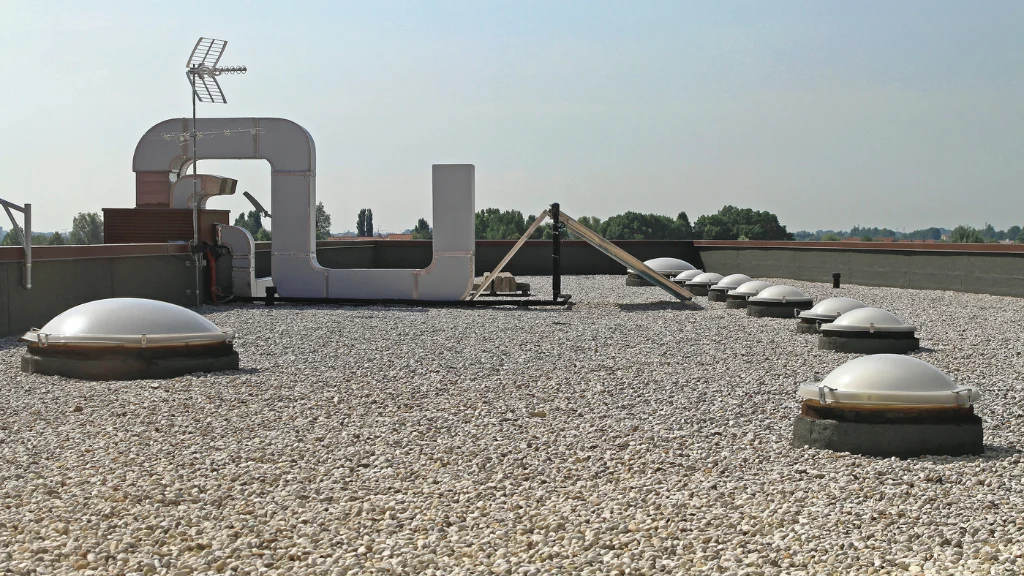
Pros of Built-Up Roofing
If you are considering a flat or low-slope roof for your building, built-up roofing (BUR) is a great option to consider. Here are some of the pros of BUR:
Durable and Waterproof
Built-up roofing is made up of multiple layers of materials, including asphalt, felt, and bitumen. This layered construction makes it incredibly durable and resistant to wear and tear.
BUR is also waterproof, making it perfect for areas with heavy rainfall or snow.
Low-Maintenance
Once installed, BUR requires very little maintenance. It is resistant to damage from UV rays, extreme temperatures, and moisture, which means it can last for decades without needing repairs or replacement.
Longevity and Reliability
When installed correctly, BUR can last for 20-30 years or more. This makes it an incredibly reliable roofing option that you won’t have to worry about replacing for a long time.
Energy Efficiency
BUR is an energy-efficient roofing option that can help reduce your building’s energy costs. The multiple layers of insulation in BUR provide excellent thermal resistance, which can help keep your building cool in the summer and warm in the winter.
Impact Resistance
Built-up roofs are highly impact-resistant, making them ideal for areas prone to hailstorms and heavy winds. They can withstand the impact of debris and hailstones without being damaged.
In summary, built-up roofing is a great option for those looking for a durable, low-maintenance, and reliable roofing solution. It is also energy-efficient and highly resistant to impact, making it perfect for areas with harsh weather conditions.
Cons of Built-Up Roofing
When considering Built-Up Roofing (BUR) for your commercial building, there are some cons to keep in mind. Here are some of the potential downsides of BUR:
Expensive
One of the cons of BUR is that it can be more expensive than other flat roofing options, such as PVC or TPO. While the cost of installation can be as low as $1 per square foot, the average price per square foot starts at around $2 or more depending on the quality options.
Careful comparison shopping can help you find the best deal for your needs.
Toxic Fumes
During the installation of BUR, potentially hazardous fumes and vapors are emitted. This can be a concern for the health and safety of workers and occupants of the building.
Proper ventilation and safety measures should be taken to minimize exposure to these fumes.
Water Damage
While BUR is a durable roofing option, it is not immune to water damage. If water is allowed to pool on the surface of the roof, it can seep through cracks or weak spots and cause leaks or other damage.
Regular maintenance and inspections can help prevent water damage and prolong the life of the roof.
Cracking
Over time, BUR can develop cracks or splits in the surface. This can be caused by a variety of factors, including weather, foot traffic, and aging.
These cracks can allow water to penetrate the roof and cause damage. Regular inspections and repairs can help prevent cracking and extend the life of the roof.
Maintenance
Like any roofing system, BUR requires regular maintenance to keep it in good condition. This can include cleaning, repairs, and inspections.
While maintenance can help prevent damage and prolong the life of the roof, it can also be time-consuming and costly.
Overall, while BUR is a durable and long-lasting roofing option, it is important to consider the potential downsides before making a decision.
By weighing the pros and cons and carefully considering your needs and budget, you can make an informed decision about the best roofing option for your commercial building.
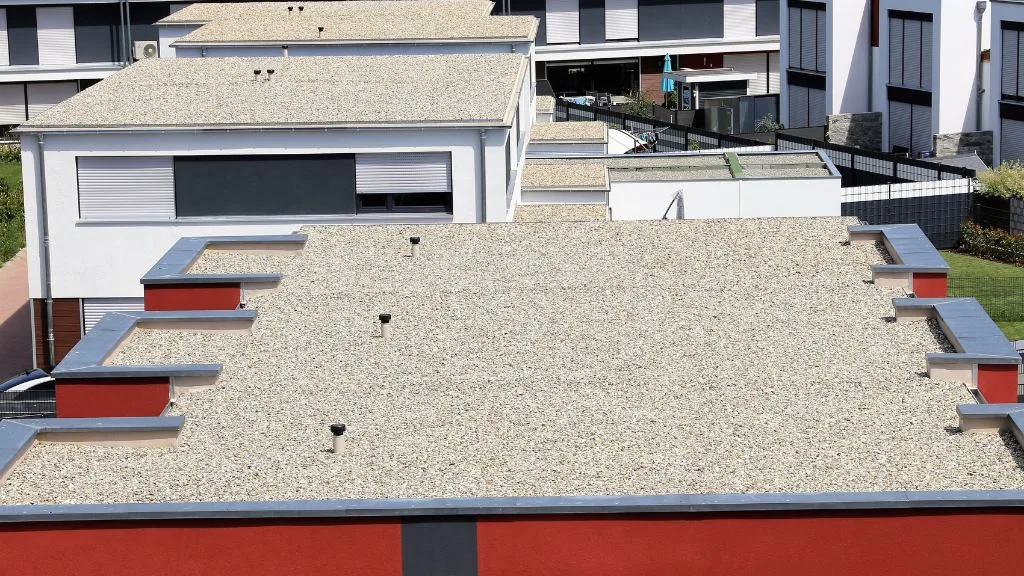
Types of Built-Up Roofing
When it comes to built-up roofing, there are two main types: tar and gravel, and modified bitumen. Both types are made up of multiple layers of materials, which are applied layer by layer to create a durable and long-lasting roof. Here’s what you need to know about each type:
Tar and Gravel Built-Up Roofing
Tar and gravel built-up roofing is a traditional type of roofing that has been used for over a century. It consists of multiple layers of hot tar and roofing felt, which are applied to the roof surface.
A layer of gravel or stone is then placed on top to protect the roof from the elements.
Pros:
- Time-tested technology
- Provides good insulation
- Can be repaired easily
Cons:
- Heavy and requires a strong roof structure
- Difficult to install and requires skilled labor
- Can be prone to leaks if not installed properly
Modified Bitumen Built-Up Roofing
Modified bitumen built-up roofing is a newer type of roofing that is made up of a combination of asphalt and rubber. It is applied in sheets, which are then heat-welded together to create a seamless, waterproof surface.
Pros:
- Lightweight and easy to install
- Provides good insulation
- Resistant to UV rays and weather damage
Cons:
- Can be prone to punctures and tears
- Requires regular maintenance to prevent damage
- May not be as durable as other types of roofing
Overall, both types of built-up roofing have their pros and cons. The choice between the two will depend on your specific needs and budget. It’s important to work with a qualified roofing contractor who can help you choose the right type of roofing for your home or business.
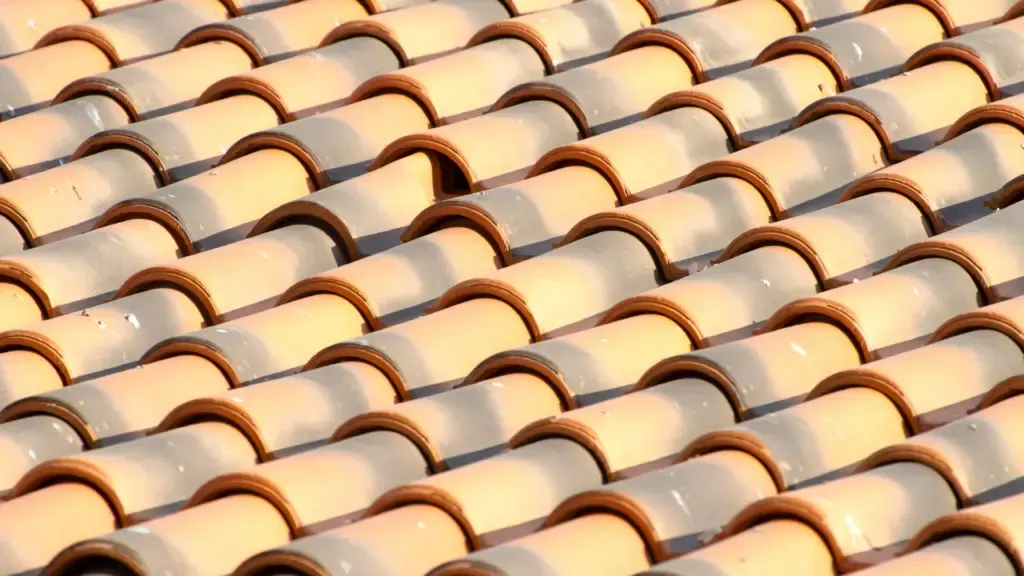
Installation of Built-Up Roofing
When it comes to installing built-up roofing, it is important to follow proper procedures to ensure that the roof is durable and long-lasting. Here are some steps to follow when installing built-up roofing on your flat or low-slope roof:
- Prepare the surface: Before installing the built-up roofing, make sure the surface is clean, dry, and free of any debris. Any surface irregularities should be repaired before installation.
- Install the insulation layer: An insulation layer should be installed on top of the roof deck to provide thermal resistance and improve energy efficiency. The insulation layer should be mechanically fastened or adhered to the roof deck.
- Install the roofing felt: A layer of roofing felt is then installed on top of the insulation layer. The roofing felt should be overlapped by at least 2 inches and nailed or stapled to the roof deck.
- Install the reinforcing fabric: A reinforcing fabric, such as fiberglass, is then laid over the roofing felt. The reinforcing fabric should be embedded in a layer of hot asphalt or cold adhesive.
- Install additional layers: Additional layers of roofing felt and reinforcing fabric are then installed, with each layer overlapping the previous layer by at least 2 inches.
- Seal the seams: The seams between the layers of roofing felt and reinforcing fabric should be sealed with hot asphalt or cold adhesive to prevent water infiltration.
- Apply the top layer: The top layer of the built-up roofing system is then installed. This layer can be made of gravel, mineral granules, or a reflective coating.
Overall, the installation of built-up roofing requires careful attention to detail to ensure that the roof is waterproof and durable. By following these steps, you can ensure that your built-up roofing system will provide long-lasting protection for your flat or low-slope roof.
Maintenance and Repair of Built-Up Roofing
Maintaining and repairing your Built-Up Roofing (BUR) system is crucial to ensure its longevity and functionality. Here are some tips on how to properly maintain and repair your BUR:
Maintenance
Regular maintenance is key to preventing costly repairs down the line. Here are some maintenance tasks you should perform on your BUR:
- Inspect your roof regularly, especially after severe weather events.
- Remove debris such as leaves, branches, and dirt from the roof surface.
- Check for blistering, cracks, and open joints and repair them promptly.
- Ensure that the drainage system is functioning correctly and clear any clogs.
Repairs
Repairs to your BUR system should be done promptly to prevent further damage. Here are some common repairs you may need to make:
- Repairing blisters: Blisters occur when the layers of the BUR system separate, causing air pockets to form. To repair them, cut open the blister, remove any moisture, and apply roofing cement to the area before resealing it.
- Fixing cracks: Cracks can occur due to age, weather, or foot traffic. To repair them, clean the area, apply roofing cement, and add a layer of bitumen or asphalt to the crack.
- Sealing open joints: Open joints can occur when the roofing materials shift or shrink. To repair them, clean the area, apply roofing cement, and add a layer of bitumen or asphalt to the joint.
Waterproofing
Waterproofing your BUR system is essential to prevent leaks and water damage. Here are some tips on how to ensure proper waterproofing:
- Ensure that the drainage system is functioning correctly.
- Apply a waterproof coating to the surface of the BUR system.
- Add a layer of gravel or other ballast to protect the roofing materials from UV rays and weather.
Toxic Fumes
When working with BUR systems, it’s important to take precautions to avoid exposure to toxic fumes. Here are some safety tips:
- Wear protective gear such as gloves, goggles, and a respirator.
- Work in a well-ventilated area.
- Use roofing cement and other materials in a well-ventilated area.
By following these maintenance and repair tips, you can ensure that your BUR system lasts for many years and provides reliable protection for your building.
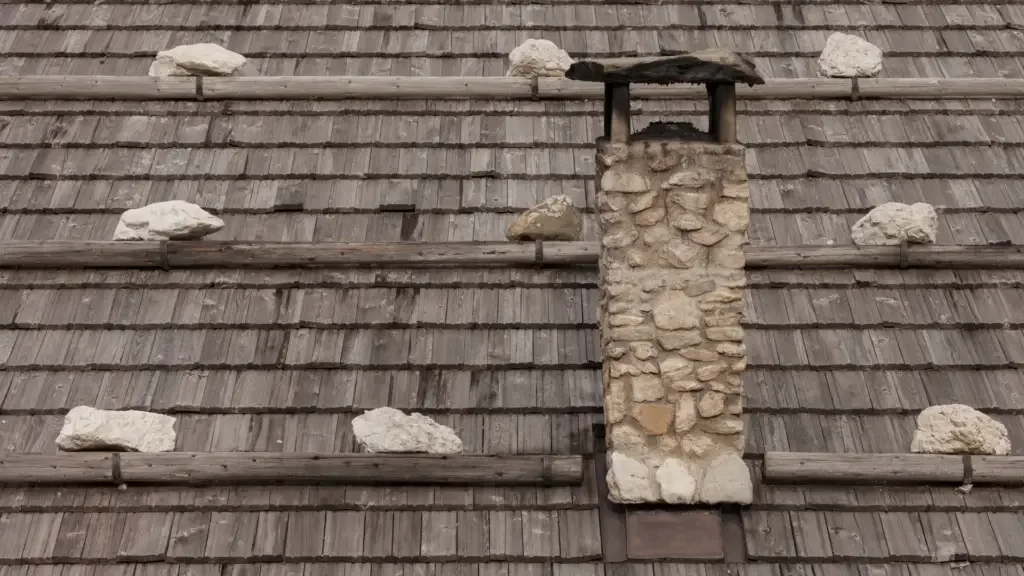
Built-Up Roofing vs. Other Roofing Materials
When it comes to roofing materials, there are several options available in the market. Each material has its own set of pros and cons.
If you are considering Built-Up Roofing (BUR) for your commercial or residential roofing needs, it’s important to compare it with other popular materials in the market. Here’s a comparison of Built-Up Roofing with other roofing materials:
Shingles
Shingles are a popular choice for residential roofing. They are affordable, easy to install, and come in a variety of colors and designs.
However, shingles are not suitable for flat roofs, which is where Built-Up Roofing comes in. BUR is a better option for flat roofs as it provides a more durable and long-lasting solution.
Membrane Roofing
Membrane roofing is another popular option for flat roofs. It includes materials like EPDM, TPO, and PVC. Membrane roofing is easy to install, lightweight, and provides good insulation.
However, it may not be as durable as Built-Up Roofing and may require more maintenance over time.
Flat Roofing Systems
Flat roofing systems are designed specifically for flat roofs. They include Built-Up Roofing, as well as other materials like Modified Bitumen (MBR) and Single-Ply Membrane Roofing. Built-Up Roofing is a cost-effective option among these materials, as it provides a good balance between durability and affordability.
Commercial Roofing Systems
Commercial roofing systems are designed for larger buildings and commercial spaces. They require materials that can withstand heavy foot traffic and weather conditions.
Built-Up Roofing is a popular choice for commercial roofing as it is durable, easy to repair, and provides good insulation. Other materials like metal roofing and spray foam roofing are also popular options for commercial roofing.
In summary, Built-Up Roofing is a great option for flat roofs, both for residential and commercial buildings. While other roofing materials like shingles and membrane roofing have their own advantages, they may not be as suitable for flat roofs as Built-Up Roofing.
When choosing a roofing material, consider your specific needs, budget, and the climate in your area.
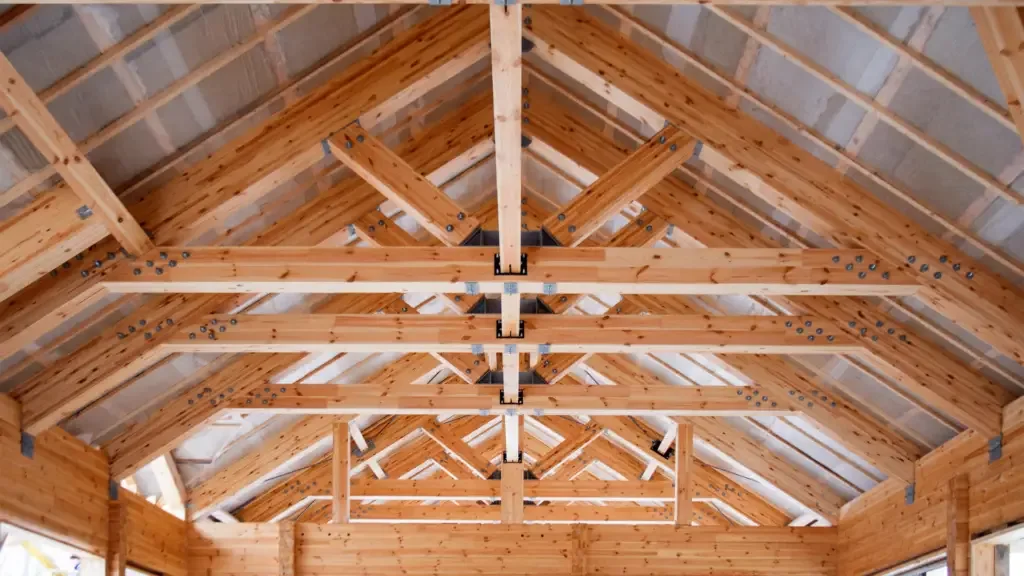
Cost of Built-Up Roofing
If you’re looking for an inexpensive option for your commercial building’s roof, Built-Up Roofing (BUR) may be a good choice for you. The cost of installation can range from as low as $1 per square foot to around $2 or more per square foot, depending on the quality options you choose.
The cost of materials for a BUR system can range from $165 to $250 per square.
One thing to keep in mind is that while BUR is generally an inexpensive option, the cost can vary depending on the quality of the roofing materials used, the quality of the workmanship, and the pricing of the roofing company you choose.
That being said, BUR can be a cost-effective solution for commercial building owners looking to re-roof.
It’s important to note that while BUR may be an inexpensive option upfront, it may not always be the most cost-effective option in the long run. BUR typically has a shorter lifespan compared to other roofing materials, which means you may need to replace it sooner than you would with other options.
This can result in more frequent maintenance and repair costs, which can add up over time.
Overall, BUR can be an inexpensive option for commercial building owners looking to re-roof. However, it’s important to consider the quality of the materials and workmanship, as well as the long-term costs associated with maintenance and repairs.
Environmental Impact of Built-Up Roofing
When it comes to the environmental impact of Built-Up Roofing (BUR), there are several factors to consider. One of the main concerns is the use of hot asphalt during installation, which can emit toxic fumes that are harmful to the environment and human health.
However, there are also some benefits to using BUR in terms of energy efficiency and UV protection.
To minimize the environmental impact of BUR, it is important to use proper installation techniques and follow safety guidelines. This includes using protective gear when handling hot asphalt and ensuring proper ventilation during installation.
In terms of energy efficiency, BUR can help reduce energy costs by providing insulation and reducing heat loss. This can be especially beneficial in colder climates where heating costs can be high.
When it comes to UV protection, BUR can be an effective solution for protecting your roof against harmful UV rays. However, it is important to choose the right materials and ensure proper installation to ensure maximum protection.
Overall, while there are some environmental concerns associated with BUR, proper installation and maintenance can help minimize the impact and provide several benefits in terms of energy efficiency and UV protection.
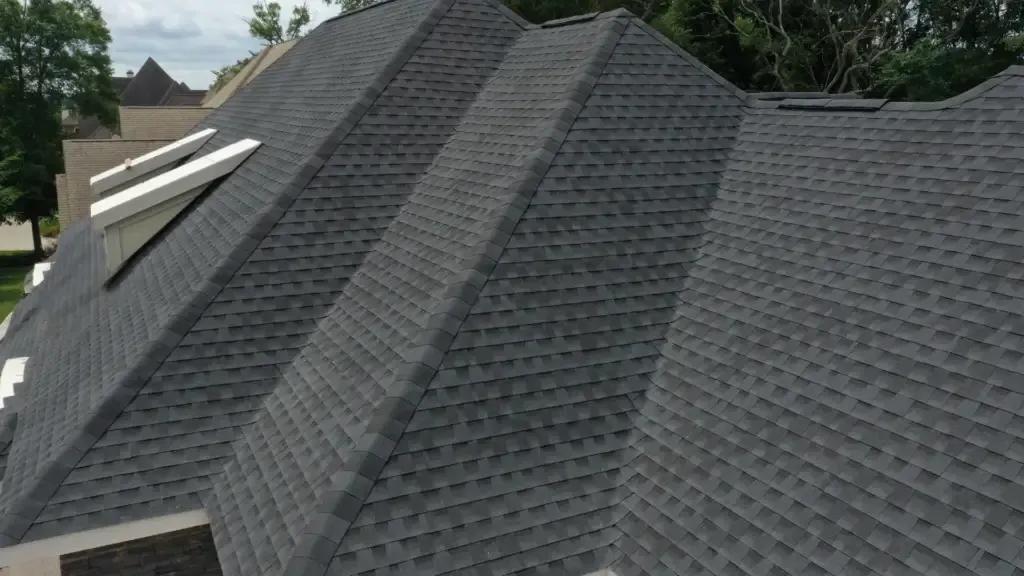
Conclusion
In summary, Built Up Roofing (BUR) systems have both pros and cons that should be carefully considered before choosing this type of roof system for your commercial building.
One of the main advantages of BUR is its durability. With proper maintenance, a BUR system can last up to 40 years, making it a long-lasting and cost-effective option for your low slope roof.
Additionally, BUR systems are fire-resistant, making them a safer choice for your building. They are also constructed with a waterproof membrane, providing excellent protection against water damage.
However, there are also some disadvantages to BUR systems. They can be heavy, requiring additional structural support.
The installation process can also be time-consuming and messy, which may cause disruptions to your business operations.
Furthermore, BUR systems can be more expensive than other roofing options, such as single-ply membranes. The cost can vary depending on the quality of materials and workmanship.
Overall, BUR systems are a reliable and effective choice for commercial roofs. However, it is important to weigh the pros and cons carefully before making a decision.
Consider factors such as your budget, building structure, and maintenance requirements when choosing a roof system for your commercial building.

